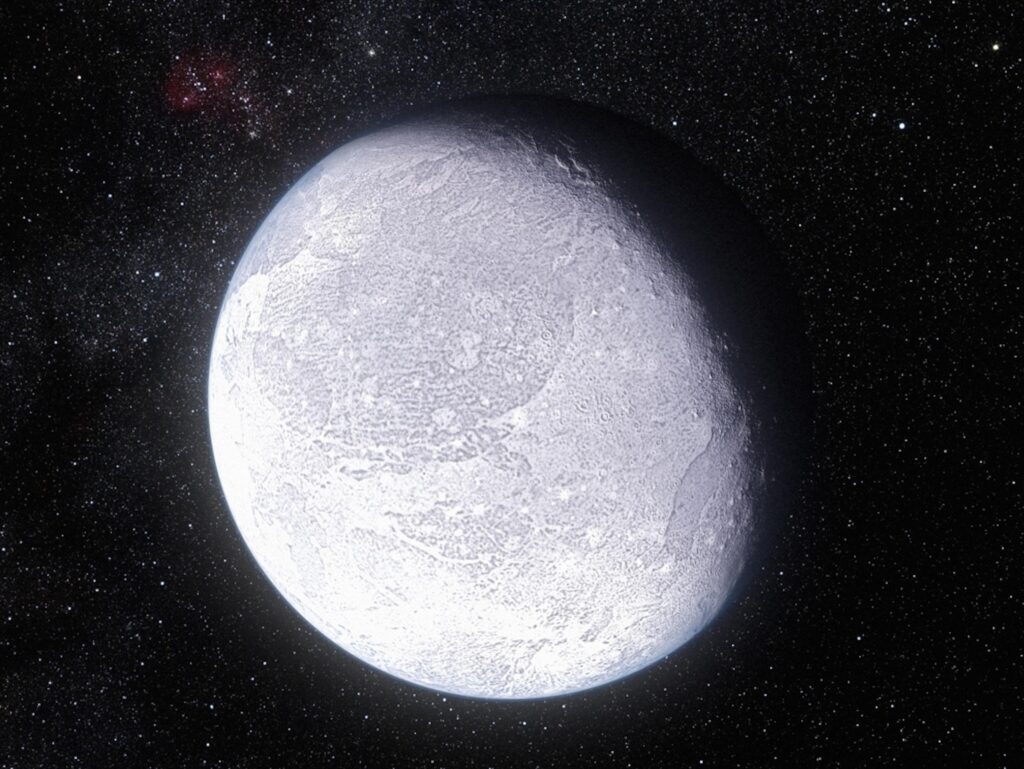In the vast, ink-black canvas of our solar system, a celestial drama unfolded on January 5, 2005, that would forever alter our understanding of planetary classification. From the distant reaches of the Kuiper Belt emerged Eris, a celestial body whose discovery would spark a cosmic controversy and ultimately reshape the definition of a planet. Astronomers Mike Brown, Chad Trujillo, and David Rabinowitz had unveiled a world that would challenge long-held astronomical assumptions and trigger a scientific debate that would reverberate through planetariums and research institutions worldwide. Little did they know that this icy, rocky object would become the catalyst for Pluto’s controversial reclassification and usher in a new era of understanding our solar neighborhood. On a crisp winter day in 2005, the astronomical world was forever changed when a team of astronomers led by Mike Brown at the California Institute of Technology discovered Eris, a distant celestial body that would spark a monumental scientific debate about planetary classification.
Eris, initially designated as 2003 UB313, was found in the outer reaches of our solar system, lurking in the frigid Kuiper Belt. Slightly smaller than Pluto but more massive, this icy world challenged long-established definitions of what constitutes a planet. Its discovery became a pivotal moment in astronomical history, ultimately leading to a dramatic reclassification of celestial objects.
The International Astronomical Union (IAU) found itself at the center of an intense scientific controversy. Eris’s characteristics forced astronomers to confront fundamental questions about planetary taxonomy. Was Pluto truly a planet, or merely a large chunk of cosmic debris? The debate rapidly evolved from academic discussion to a global scientific discourse.
In August 2006, the IAU made a groundbreaking decision. They established a precise definition of a planet, which required celestial bodies to orbit the sun, be massive enough to achieve a nearly round shape, and crucially, clear their orbital neighborhood of other objects. Pluto failed to meet these criteria, resulting in its controversial demotion to a “dwarf planet” status.
Brown’s team’s discovery of Eris was more than just finding another celestial object. It represented a paradigm shift in understanding our solar system’s complex structure. The newfound object was approximately 27% more massive than Pluto, providing compelling evidence that the outer solar system contained numerous similar planetary candidates.
The scientific community was divided. Some astronomers celebrated the more rigorous planetary definition, while others mourned the loss of Pluto’s planetary status. Schools worldwide updated textbooks, and public fascination with astronomical classifications reached unprecedented levels.
For Mike Brown, the discovery was professionally transformative. He would later earn the nickname “Pluto Killer” – a moniker he embraced with scientific humor. The discovery of Eris fundamentally altered our comprehension of the solar system’s composition and challenged generations of astronomical understanding.
Today, Eris remains a testament to the dynamic nature of scientific knowledge. Orbiting approximately 96 astronomical units from the sun, it continues to fascinate researchers and serves as a reminder that our understanding of the universe is constantly evolving, with each discovery potentially rewriting established scientific narratives.

